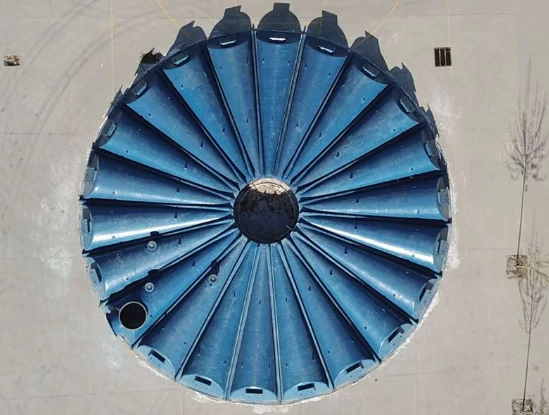
-
 Afrikaans
Afrikaans -
 Albanian
Albanian -
 Amharic
Amharic -
 Arabic
Arabic -
 Armenian
Armenian -
 Azerbaijani
Azerbaijani -
 Basque
Basque -
 Belarusian
Belarusian -
 Bengali
Bengali -
 Bosnian
Bosnian -
 Bulgarian
Bulgarian -
 Catalan
Catalan -
 Cebuano
Cebuano -
 China
China -
 China (Taiwan)
China (Taiwan) -
 Corsican
Corsican -
 Croatian
Croatian -
 Czech
Czech -
 Danish
Danish -
 Dutch
Dutch -
 English
English -
 Esperanto
Esperanto -
 Estonian
Estonian -
 Finnish
Finnish -
 French
French -
 Frisian
Frisian -
 Galician
Galician -
 Georgian
Georgian -
 German
German -
 Greek
Greek -
 Gujarati
Gujarati -
 Haitian Creole
Haitian Creole -
 hausa
hausa -
 hawaiian
hawaiian -
 Hebrew
Hebrew -
 Hindi
Hindi -
 Miao
Miao -
 Hungarian
Hungarian -
 Icelandic
Icelandic -
 igbo
igbo -
 Indonesian
Indonesian -
 irish
irish -
 Italian
Italian -
 Japanese
Japanese -
 Javanese
Javanese -
 Kannada
Kannada -
 kazakh
kazakh -
 Khmer
Khmer -
 Rwandese
Rwandese -
 Korean
Korean -
 Kurdish
Kurdish -
 Kyrgyz
Kyrgyz -
 Lao
Lao -
 Latin
Latin -
 Latvian
Latvian -
 Lithuanian
Lithuanian -
 Luxembourgish
Luxembourgish -
 Macedonian
Macedonian -
 Malgashi
Malgashi -
 Malay
Malay -
 Malayalam
Malayalam -
 Maltese
Maltese -
 Maori
Maori -
 Marathi
Marathi -
 Mongolian
Mongolian -
 Myanmar
Myanmar -
 Nepali
Nepali -
 Norwegian
Norwegian -
 Norwegian
Norwegian -
 Occitan
Occitan -
 Pashto
Pashto -
 Persian
Persian -
 Polish
Polish -
 Portuguese
Portuguese -
 Punjabi
Punjabi -
 Romanian
Romanian -
 Russian
Russian -
 Samoan
Samoan -
 Scottish Gaelic
Scottish Gaelic -
 Serbian
Serbian -
 Sesotho
Sesotho -
 Shona
Shona -
 Sindhi
Sindhi -
 Sinhala
Sinhala -
 Slovak
Slovak -
 Slovenian
Slovenian -
 Somali
Somali -
 Spanish
Spanish -
 Sundanese
Sundanese -
 Swahili
Swahili -
 Swedish
Swedish -
 Tagalog
Tagalog -
 Tajik
Tajik -
 Tamil
Tamil -
 Tatar
Tatar -
 Telugu
Telugu -
 Thai
Thai -
 Turkish
Turkish -
 Turkmen
Turkmen -
 Ukrainian
Ukrainian -
 Urdu
Urdu -
 Uighur
Uighur -
 Uzbek
Uzbek -
 Vietnamese
Vietnamese -
 Welsh
Welsh -
 Bantu
Bantu -
 Yiddish
Yiddish -
 Yoruba
Yoruba -
 Zulu
Zulu
Efficient FRP Moisture Trap for Enhanced Performance and Durability in Composite Materials
Understanding FRP Moisture Traps A Comprehensive Overview
In the realm of engineering and construction, the issues of moisture control and management are paramount, especially in composite materials like fiberglass reinforced plastics (FRP). Among the solutions available for tackling moisture ingress, FRP moisture traps have emerged as a vital component, ensuring that structures maintain their integrity and longevity in the face of environmental challenges.
What is FRP?
Fiberglass Reinforced Plastic (FRP) is a composite material made by combining a polymer matrix with fiberglass. This composition grants FRP properties such as durability, corrosion resistance, and lightweight characteristics, making it a preferred choice in various applications ranging from automotive parts to structural components in buildings. However, the porous nature of some FRP materials can lead to moisture absorption, which can compromise structural integrity and promote localized damage.
The Necessity of Moisture Traps
Moisture intrusion can result in several issues, including mold growth, material degradation, and loss of mechanical properties. For instance, when moisture infiltrates FRP, it can lead to hydrolysis of the resin, causing delamination and weakening the composite. To combat these potential pitfalls, engineers and designers have developed moisture traps specifically for FRP applications.
Moisture traps serve as barriers or drainage systems that capture and redirect water away from sensitive components and areas prone to moisture accumulation. They are designed to prevent moisture from building up within the FRP matrix or adjacent structures, thereby prolonging the life cycle of the material and ensuring safety and effectiveness.
Design and Functionality of FRP Moisture Traps
The design of FRP moisture traps varies depending on their application, but they typically share common features aimed at efficient moisture management. Most moisture traps are constructed with the following considerations
frp moisture trap

1. Material Selection The choice of materials for moisture traps is crucial. High-quality FRP materials that exhibit low water absorption and high chemical resistance are preferred to ensure durability.
2. Structural Integration Effective moisture traps must be integrated seamlessly into the larger FRP structures. This involves strategic placement within the composite lamination, allowing for efficient removal of any trapped moisture without disrupting the overall structural integrity.
3. Drainage Mechanisms Many FRP moisture traps include built-in drainage systems that allow any collected moisture to escape. This can be achieved through strategic slope designs, placing drain holes at lower elevations, or designing channels that guide water away from critical areas.
4. Use of Sealants In some cases, sealants may be employed around the moisture trap to enhance its effectiveness. This adds an extra layer of protection against moisture penetration while maintaining the overall aesthetic and structural characteristics of the FRP component.
Applications of FRP Moisture Traps
The applications of FRP moisture traps are vast and varied. In the construction industry, they are commonly found in facades, roofing systems, and decks, where moisture exposure is prevalent. In marine environments, they protect boat hulls and other watercraft components from corrosive saltwater. Additionally, FRP moisture traps are used in wastewater treatment facilities, where they assist in managing corrosive environments while safeguarding structural components.
Conclusion
The importance of moisture management in FRP applications cannot be overstated. FRP moisture traps play a crucial role in enhancing the performance and longevity of FRP materials by preventing moisture infiltration and subsequent damage. As industries continue to adopt advanced materials like FRP, the development and implementation of efficient moisture management solutions will remain a focal point for engineers and designers aiming to ensure reliable and durable constructions. In this context, understanding and utilizing FRP moisture traps not only represents a technical advancement but also a necessary strategy for safeguarding investments in composite technologies.









